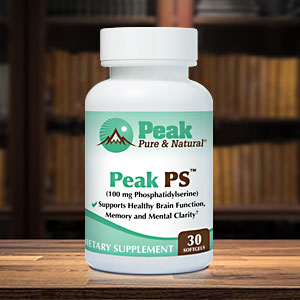Get Easy Health Digest™ in your inbox and don’t miss a thing when you subscribe today. Plus, get the free bonus report, Mother Nature’s Tips, Tricks and Remedies for Cholesterol, Blood Pressure & Blood Sugar as my way of saying welcome to the community!
Know these early signs to head off Parkinson’s disease

We didn’t know my dad had Parkinson’s disease until we noticed the tremors. The uncontrollable shaking of his hands and legs was a sure sign.
However, without our being aware, those tremors had been preceded by a series of other signs and symptoms that could have alerted us sooner, had we known what to look for.
While there is no cure for Parkinson’s disease, early detection can dramatically improve quality of life and severity of symptoms.
According to Dr. Michael Okun, National Medical Director of the National Parkinson Foundation, “Research has shown that seeing a neurologist improves outcomes, and seeing a movement disorders specialist can speed improvement in symptoms.”
People often ignore the early signs of Parkinson’s, since these symptoms often closely resemble signs of aging we’ve been groomed to accept as normal. This makes it even more important that you pay attention and take note of any of the following early warning signs…
Lesser-known signs of Parkinson’s
- Loss of smell. Years before any motor or neurological symptoms show up, sense of smell may begin to diminish. A person may have trouble distinguishing even strong smells like licorice, banana, or menthol.
As Parkinson’s progresses, cells that produce the chemical messenger dopamine begin to die off. Most people don’t notice this until it affects signals between brain and motor neurons, but impaired odor detection is the first indication that this is happening.
Many researchers consider an impaired sense of smell to be the earliest and most revealing warning sign of dopamine loss, so much so that they are working to develop a screening test for Parkinson’s based on smell function.
- Excessive sweating. Parkinson’s disease affects the autonomic nervous system, which can cause changes to the skin and sweat glands. In women, this can easily be mistaken for the “hot flashes” of menopause.
This early effect on the nervous system may also show up as excessively oily skin, oily scalp and dandruff, where this was not a problem before.
- Changes in handwriting. The slowing down and loss of spontaneous, routine movement is known as bradykinesia. In a person with Parkinson’s, their handwriting is often the first place this shows itself.
Perhaps you receive a letter from a loved one and their handwriting suddenly appears spidery, or letters and words are smaller and crowded together. This could be a sign of bradykinesia. Later, this tends to show up as facial masking, a stiff, expressionless face even when happy or trying to smile.
- Stiff arm. Doctors describe this early symptom as ‘reduced arm swing.’ It’s really increased rigidity, causing reduced range of motion.
Looking back, most Parkinson’s patients remember noticing this while walking, as one arm swinging less than the other. Reduced arm swing is distinguishable from arthritis or injury because there is no joint involvement or pain.
- Softer voice. If you are always being asked to speak up, even when you think you’re speaking normally, it could be due to hypophonia, another early Parkinson’s symptom. If this change has been sudden and not due to cold or flu, pay attention.
- Orthostatic hypotension – A non-motor symptom of Parkinson’s, this drop in blood pressure when sitting or standing can cause lightheadedness or dizziness.
- Constipation – There are many causes for this, especially as we age. However, constipation caused by Parkinson’s often brings with it a feeling of fullness, even after having eaten very little. It also tends to last longer.
- Persistent neck pain. Women in particular have reported this as the third-most common warning sign they remember when asked how they first knew they had Parkinson’s.
Unlike a pulled muscle, this pain persists. For some women, it’s more of a tingling or numbness, or an ache that travels to the shoulder, causing them to keep trying to stretch their neck, without any relief.
If you or a loved one develops any of these warning signs and symptoms, it’s important to meet with your doctor. If you are in the early stages of Parkinson’s, there is much that can be done to head off symptoms and help you maintain your quality of life.
Related: Brain-boosting B vitamins could be Parkinson’s cure
Diet can also play a huge part in controlling Parkinson’s symptoms. Recent research indicates that people who include healthy fats in their diet may have less risk than those who don’t. And, certain nutrients, vitamins, and other natural substances have been shown to have a positive effect as well.
It’s also important to examine medications you take. Researchers have discovered a strong association between statin use and risk of Parkinson’s, particularly in the first 2.5 years of taking the drugs, “suggesting that statins may facilitate the onset” of Parkinson’s disease.
Sources:
- Improving outcomes through early diagnosis of Parkinson’s disease — The American Journal of Managed Care
- Do You Have Early Warning Signs of Parkinson’s Disease? — Everyday Health
- 10 Lesser-Known Parkinson’s Disease Symptoms — The Michael J. Fox Foundation
- 10 Early signs of Parkinsons That Doctors Often Miss — Northwest Parkinson’s Foundation













